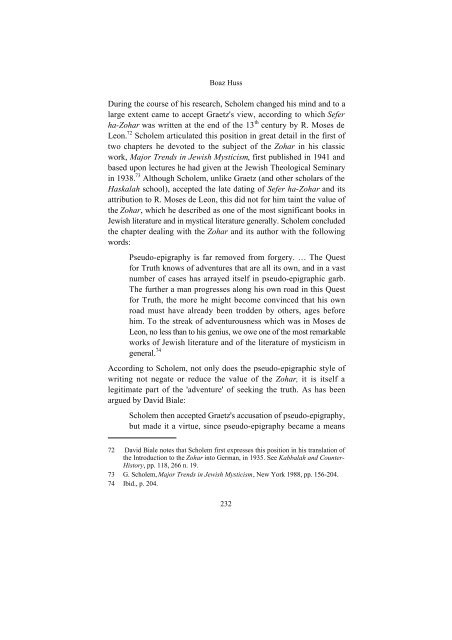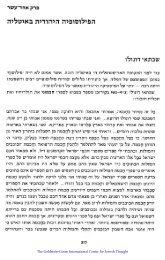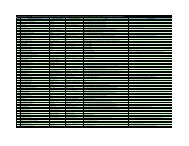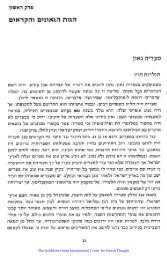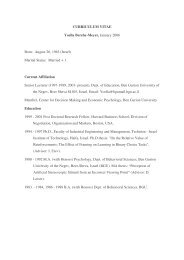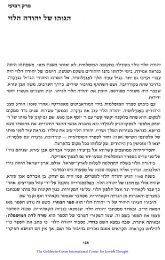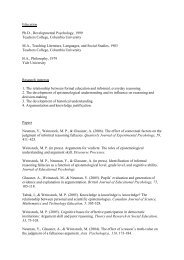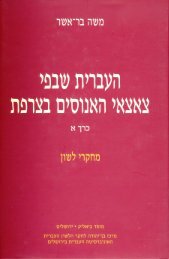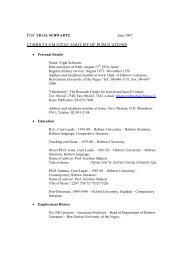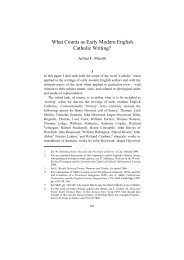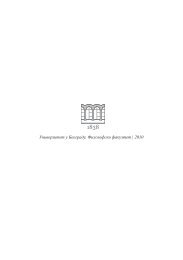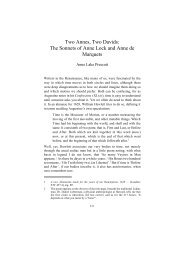Admiration and Disgust: The Ambivalent Re-Canonization of the ...
Admiration and Disgust: The Ambivalent Re-Canonization of the ...
Admiration and Disgust: The Ambivalent Re-Canonization of the ...
Create successful ePaper yourself
Turn your PDF publications into a flip-book with our unique Google optimized e-Paper software.
Boaz Huss<br />
During <strong>the</strong> course <strong>of</strong> his research, Scholem changed his mind <strong>and</strong> to a<br />
large extent came to accept Graetz's view, according to which Sefer<br />
ha-Zohar was written at <strong>the</strong> end <strong>of</strong> <strong>the</strong> 13 th century by R. Moses de<br />
Leon. 72 Scholem articulated this position in great detail in <strong>the</strong> first <strong>of</strong><br />
two chapters he devoted to <strong>the</strong> subject <strong>of</strong> <strong>the</strong> Zohar in his classic<br />
work, Major Trends in Jewish Mysticism, first published in 1941 <strong>and</strong><br />
based upon lectures he had given at <strong>the</strong> Jewish <strong>The</strong>ological Seminary<br />
in 1938. 73 Although Scholem, unlike Graetz (<strong>and</strong> o<strong>the</strong>r scholars <strong>of</strong> <strong>the</strong><br />
Haskalah school), accepted <strong>the</strong> late dating <strong>of</strong> Sefer ha-Zohar <strong>and</strong> its<br />
attribution to R. Moses de Leon, this did not for him taint <strong>the</strong> value <strong>of</strong><br />
<strong>the</strong> Zohar, which he described as one <strong>of</strong> <strong>the</strong> most significant books in<br />
Jewish literature <strong>and</strong> in mystical literature generally. Scholem concluded<br />
<strong>the</strong> chapter dealing with <strong>the</strong> Zohar <strong>and</strong> its author with <strong>the</strong> following<br />
words:<br />
Pseudo-epigraphy is far removed from forgery. … <strong>The</strong> Quest<br />
for Truth knows <strong>of</strong> adventures that are all its own, <strong>and</strong> in a vast<br />
number <strong>of</strong> cases has arrayed itself in pseudo-epigraphic garb.<br />
<strong>The</strong> fur<strong>the</strong>r a man progresses along his own road in this Quest<br />
for Truth, <strong>the</strong> more he might become convinced that his own<br />
road must have already been trodden by o<strong>the</strong>rs, ages before<br />
him. To <strong>the</strong> streak <strong>of</strong> adventurousness which was in Moses de<br />
Leon, no less than to his genius, we owe one <strong>of</strong> <strong>the</strong> most remarkable<br />
works <strong>of</strong> Jewish literature <strong>and</strong> <strong>of</strong> <strong>the</strong> literature <strong>of</strong> mysticism in<br />
general. 74<br />
According to Scholem, not only does <strong>the</strong> pseudo-epigraphic style <strong>of</strong><br />
writing not negate or reduce <strong>the</strong> value <strong>of</strong> <strong>the</strong> Zohar, it is itself a<br />
legitimate part <strong>of</strong> <strong>the</strong> 'adventure' <strong>of</strong> seeking <strong>the</strong> truth. As has been<br />
argued by David Biale:<br />
Scholem <strong>the</strong>n accepted Graetz's accusation <strong>of</strong> pseudo-epigraphy,<br />
but made it a virtue, since pseudo-epigraphy became a means<br />
72 David Biale notes that Scholem first expresses this position in his translation <strong>of</strong><br />
<strong>the</strong> Introduction to <strong>the</strong> Zohar into German, in 1935. See Kabbalah <strong>and</strong> Counter-<br />
History, pp. 118, 266 n. 19.<br />
73 G. Scholem, Major Trends in Jewish Mysticism, New York 1988, pp. 156-204.<br />
74 Ibid., p. 204.<br />
232


